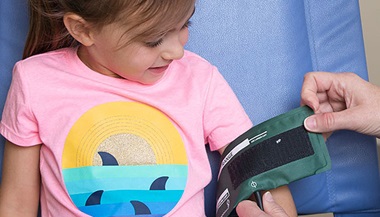Stocking a Home Medical Kit? Here’s What You Need
Featured Expert
Many of us have medicine cabinets stocked with old unused prescriptions in our homes. But when your home emergency happens, it always seems that you can’t find what you need. Patrick Mularoni, M.D., from Johns Hopkins All Children’s Hospital, explains what you should have on hand and what you should probably get rid of.
The first thing to look for are the old unfinished prescriptions you may be storing. Many of them are likely expired and some could be dangerous. You are absolutely going to want to get rid of any old prescription pain medicine. There is an opiate addiction problem in our country and when you have these items in your house you run the risk of someone in your house getting into them whether it’s a visitor, a teenager or a young child. I have personally met teen opiate addicts who have told me that they started by taking opiates out of a family medicine cabinet.
So once you’ve done some spring cleaning what does every family need in the house?
I am going to break this into two groups: medicines and then first-aid supplies.
When talking about medicines, I think that there are three things that every family should have. The first is ibuprofen. Ibuprofen is a fever reducer, pain reliever and anti-inflammatory so it is a good medicine for both making you feel better when you are ill and also works well to decrease inflammation and pain associated with injuries. The second medicine I would have on hand is a lidocaine-based tooth pain reliever. For parents of babies that are cutting teeth, it is inevitable that you will first notice tooth pain when it’s time to go to sleep. Although there are a bunch of natural teething aids that can be used as well, a lidocaine-based tooth pain reliever can be a real help when acute tooth or teething pain shows up. The last oral medicine that I suggest that every family should have is is an antihistamine to help relieve allergies and itching. You never know when a child is going to get into something that they are allergic to or that causes itching. This medicine is not only great for allergic reactions to help stop the itching but as an antihistamine. It is my first medication suggestion to help dry a sniffly nose. If given at nighttime it works great because it helps a child sleep better and dries his or her nose to decrease cough.
What should all parents have for that inevitable time that their child gets an injury?
- Self-sticking bandages
- Antibiotic ointment
- Gauze pads
- Gauze wraps
- Compression bandage
- Plastic bag
I think that every parent should keep an injury kit in both the car and in the house. You should have something to help clean a wound. You can always use water, but you are going to want some gauze pads if there is dirt or debris that needs to be removed from a cut or scrape. You should have bandages in a few sizes, and I also suggest purchasing gauze in a roll form, which works really well to cover wounds on the extremities. You should also keep an antibiotic ointment in the kit to help decrease infection risk. This also can help so that the gauze doesn’t stick to the wound. Finally you should have a compression bandage, which can be used to wrap or keep ice on an injured joint and can even be used to help make a splint as you’re on the way to see a doctor. If you don’t want to go out and buy a true first aid kit, you can keep all of this in a freezer bag, which can then be used to create an Ice pack when emptied.






